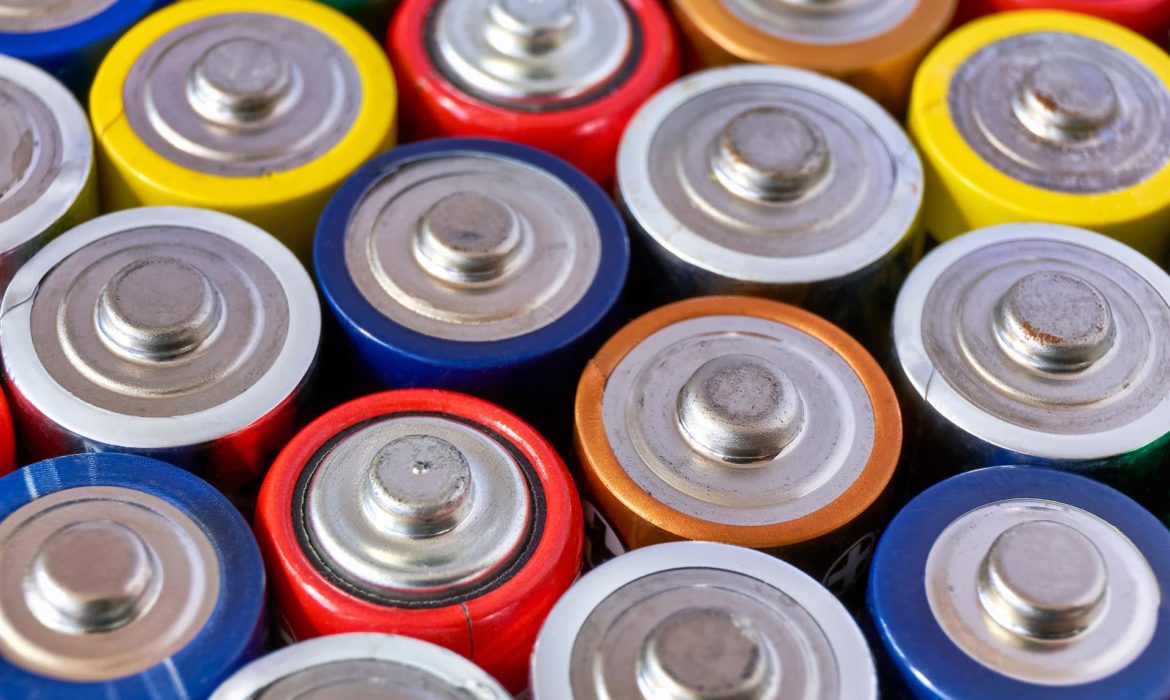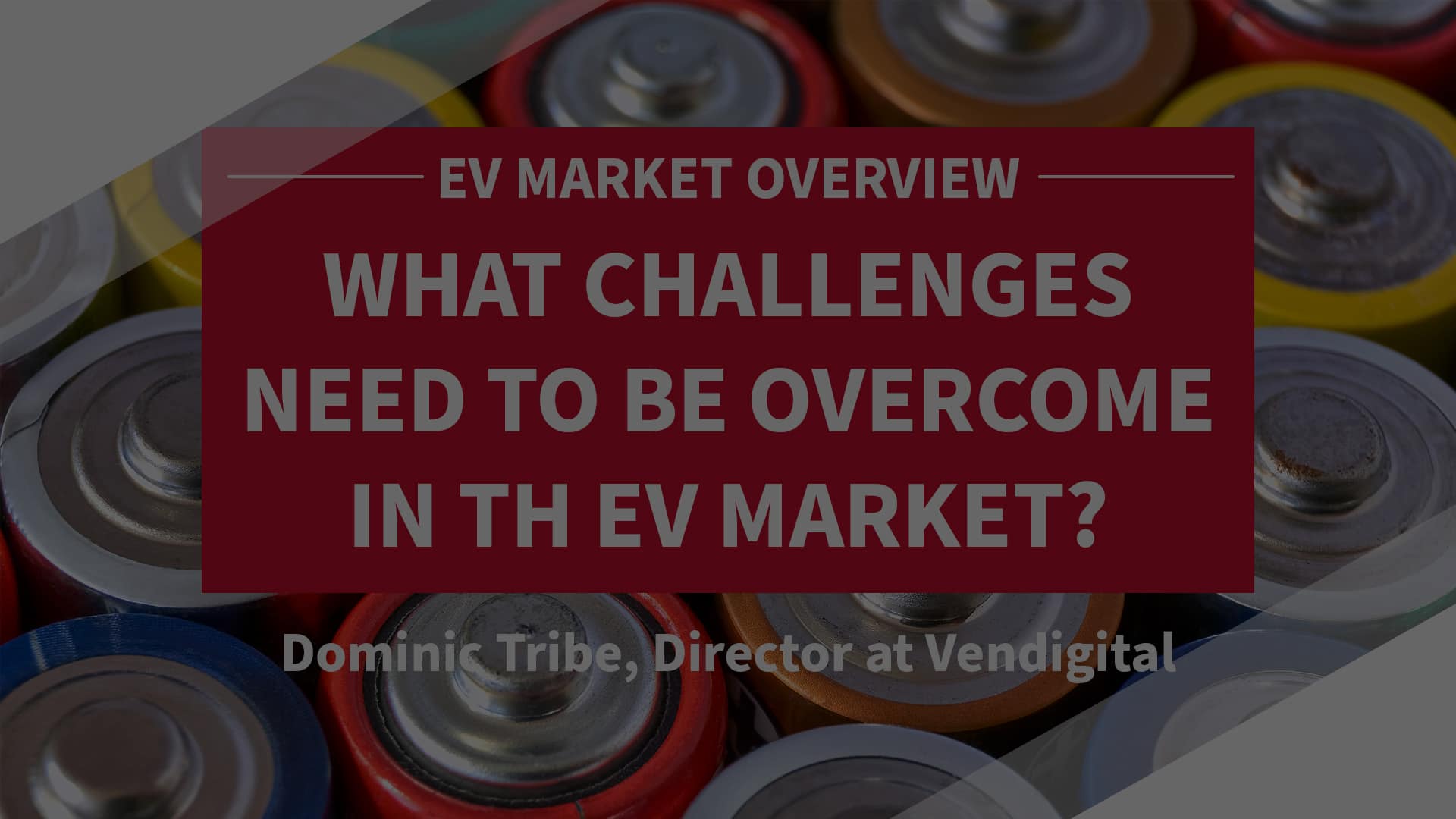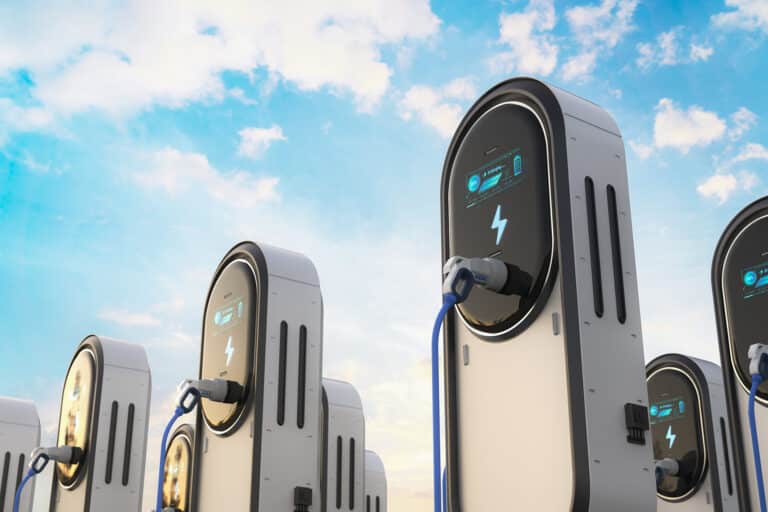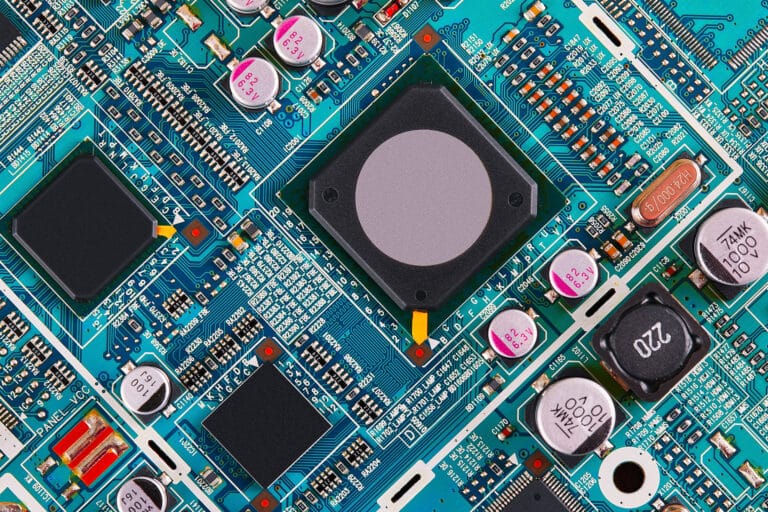
Increasing capacity and meeting decarbonisation goals – can it be done?
We discuss the cost and infrastructure considerations of switching to an all-electric fleet of off-highway vehicles.

In the final video in our series providing an overview of the EV market, Vendigital Director and automotive specialist Dominic Tribe looks at the challenges the EV market needs to overcome.

What challenges need to be overcome in the EV market – transcript
So when we think about battery chemistries and particularly the development and the history of where they’ve come and some of the alternatives, it’s quite interesting to see where the market is going but also not in terms of any format but in terms of the chemistries as well. So, when we think about cylindrical cells, we think about Tesla as kind of where it was really started and really got a lot of public attention. We started with the 18650 batteries, went into 21700 and now we’re looking at 4680 and this is really about how you maximize energy storage and density into a given format in a given package size. And so, the 4680 was really pegged into the Tesla semi-truck but that’s been delayed won’t be something that’s really ready in the kind of time frame originally proposed, which was kind of around Q1 / Q2 of this year. So testing is going to really start ramping up about now really in April and hopefully we’ll start seeing the 4680 being used more and more in vehicles which hopefully would mean nice reduction in pack size and potentially cost as well, but these are obviously large energy density which what makes it very useful for commercial vehicles like medium duty vehicles for example.
In terms of prismatic cells, we’ve seen different formats sort of move through and then BYD with their blade technology which is through CTP, so we saw that again in 2021 and so we’re seeing a move as well from prismatic to pouch as well so and vice versa, so I think it was SK that used to do pouch and now they use prismatic for the Volkswagen, particularly for the US market and then CATL for example license CTP technology for the blade technology to be used by Mobis, so this basically has a higher energy density and it’s safer as well according to some of their claims as well.
And when we think about chemistries that sorts of things talked about around sodium, zinc, aluminum, et cetera. And there are some advantages there obviously some compromises as well with a lot of this. So sodium for example, the advantage being that’s fairly abundant, it’s a lot easier to extract from this from the ground and the cost as well is very attractive, but it’s three times heavier than the equivalent lithium battery and has a slightly lower energy density, but it is compatible and it’s sort of made in the same way that lithium batteries are made. So actually, it could be quite easy transition to get into and might be useful for more storage applications or applications that require a start or ancillary system, particularly we’re talking about airplanes for example. So not just within the automotive space.
We’ve also seen interest in aluminium based batteries, but reactions are a bit slower on those and needs high temperatures to operate in terms of its most optimal output and is generally slightly lower voltage production as well. The redox reaction requires three electrons so potentially the highest charge storage capacity, but again, it’s all quite embryonic and these things take time to develop so it’s one thing making sort of grams, potentially kilograms of this in a laboratory or prototype setting, but actually getting this up to mass manufacture to make tons or tens of thousands of tones, which is kind of what’s needed actually is many, many years away. So it’s important to consider and factor that into any sort of commodity or technology roadmaps that your organization might have.
Looking at charging infrastructure, it’s interesting to see the uptake and the ratios or the proportion of charges or fast chargers to electric vehicles, and whilst the data suggests that certain countries are ahead, you’ve got to factor in there’s many other factors and elements at play here. It’s not quite as simplistic as the data or this graphic would have you believe. So for example, in Norway, there are relatively few charges and fast charges. This is public charges we’re talking about so this is publicly available information. Whereas you look at somewhere like China who has quite a large bank of publicly available charging points and stations, but when you consider the socio-economic status of the countries, when you consider their lifestyles and the way in which people live in those countries are different. For example, there are quite a lot of single-family households in Norway which have a facility to charge their vehicles at home. That isn’t necessarily true for countries such as China.
There’s also a socio-economic element to it as well, so more in affluent countries we’re seeing greater adoption and uptake. Particularly when you look at the US, for example, there’s more adoption on the West Coast and now rising on the East Coast, where in Central America, South and Midwest there’s less adoption with larger and larger distances to cover so they are more reliant on a public charging network. So actually, what we do find is that in Canada and the U.S., they have a better ratio of charges to vehicles than somewhere like Norway, for example. But that’s because of the distances that they need to cover and to drive change in consumer confidence to be able to use electric vehicles. But they still represent a very small proportion of the overall electric vehicle sales, so there’s still some way to go really to help with the adoption of electric vehicles.
So in the UK for example, there’s a lot of challenges around the infrastructure in terms of getting out, getting it in line and reconciled with the uptake of electric vehicles. We are seeing now more public charges than petrol stations. But again, you have multiple pumps at petrol stations, so I don’t think we’re quite parity yet, although there’s talk about potentially being overtaken by the latter part of this year, in 2022. But as ranges improve on electric vehicles, what we should see is more and more adoption and less of a need for as many public charging points, particularly for those that can charge a home which is roughly about half the population, but also for those that can’t charge at home having the confidence to see that chargers are available, that they work, they’re not broken and the charging time comes down as well, that will be really important. As technology improves, that will improve, but there is a change in consumer behaviour that will be needed to allow the adoption before perhaps the charging infrastructure and the charging times are where they would be in parity to filling up with gasoline or diesel, for example.
There are many challenges and opportunities when it comes to electric vehicles, not only in manufacturing, producing electric vehicles and the technology that’s needed to support that, but also the adoption from the market consumers, but also from the infrastructure that it needs to support the uptake for electric vehicles. EV start-ups are really keen to get to market quickly so they can steal market share and establish themselves in an emerging market. But there’s a lot of headwinds those costs in terms of raw materials. That’s not the price parity that we want at the moment in terms of battery electric against ice vehicles. And there’s a lot of challenges around the technology as well that’s emerging.
All this is really driven by the legislation, the carbon reduction targets that the Government’s been setting for some years now. And really now we’ve got to see this through. There’s a lot of data that comes with it. So the charging infrastructure itself, charging habits and behaviour in terms of what do we learn from consumers using electric vehicles, how should electric vehicles be used, how should they be charged, what do we learn from it as well? And the infrastructure really does need to catch up with that so that we can allay any kind of fears around consumers with range anxiety or charging anxiety but the regulation is really driving this as the challenge there and the market and the OEMs are rising to the challenge. But, you know, there are a lot of challenges to overcome but the opportunity is that we can electrify a lot of our vehicles in a lot of applications, not necessarily all of them. Also, there are some emerging technologies like e-fuels and hydrogen and other things like that, that hopefully will support the desire for the globe to become greener and to reduce emissions overall.
Sign up to get the latest insights from Vendigital
Looking for an industry expert?
Related Insights

We discuss the cost and infrastructure considerations of switching to an all-electric fleet of off-highway vehicles.

EV makers in the UK and Europe are warning that Zero Emission Mandates are simply not doable and subdued levels of demand could force them to close factories. Should the industry embrace Chinese capability before it’s too late?

In our latest report we examine the impact of power electronics and the importance of inverters in EV manufacturing.
Subscribe to our newsletter